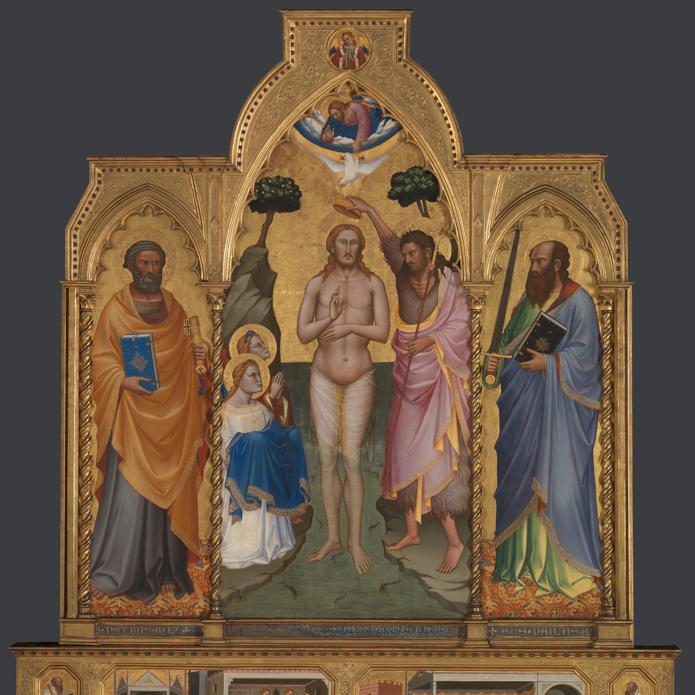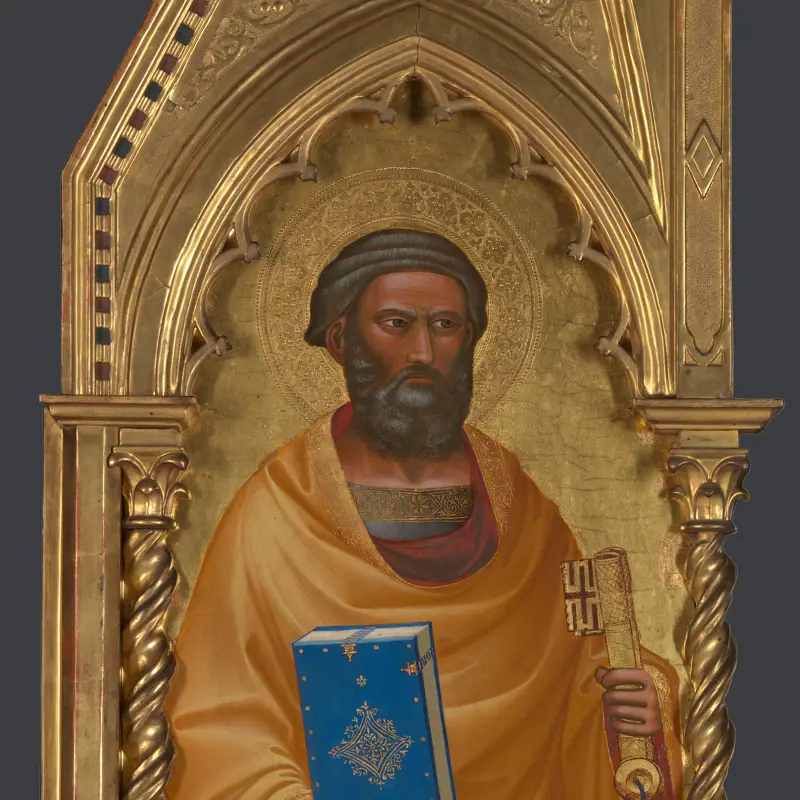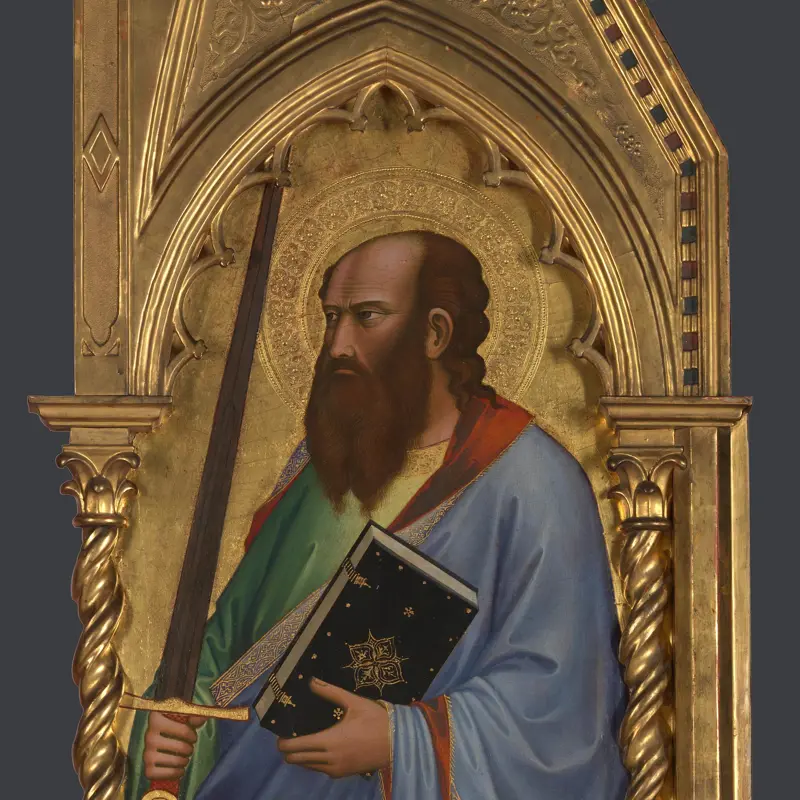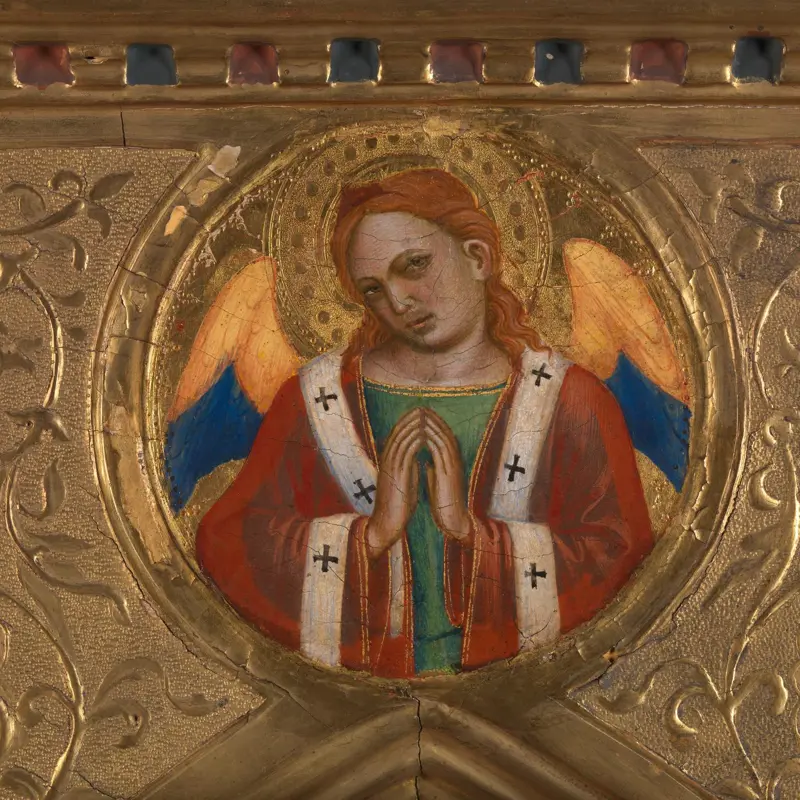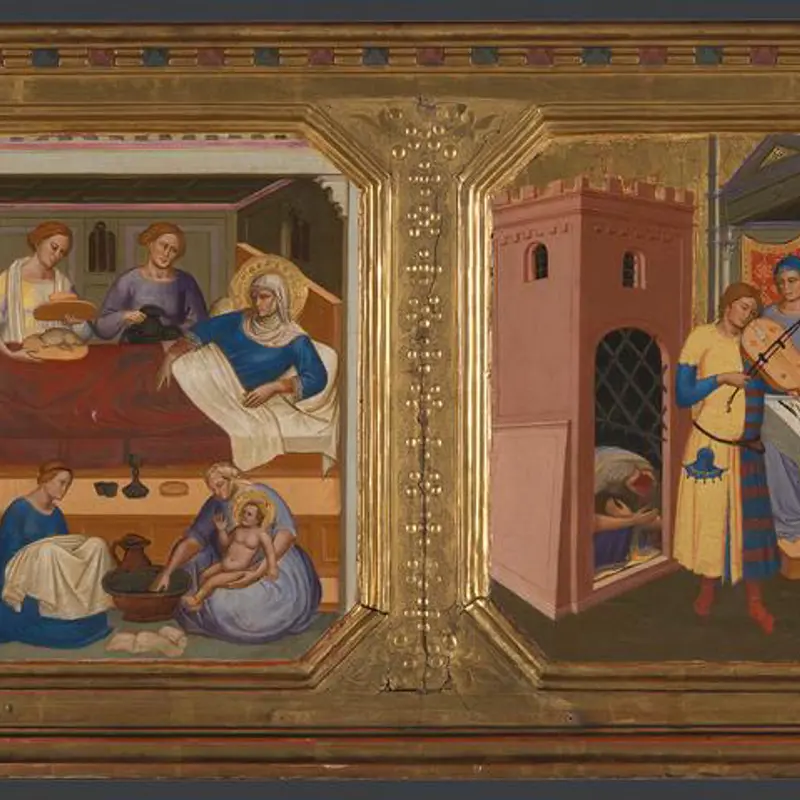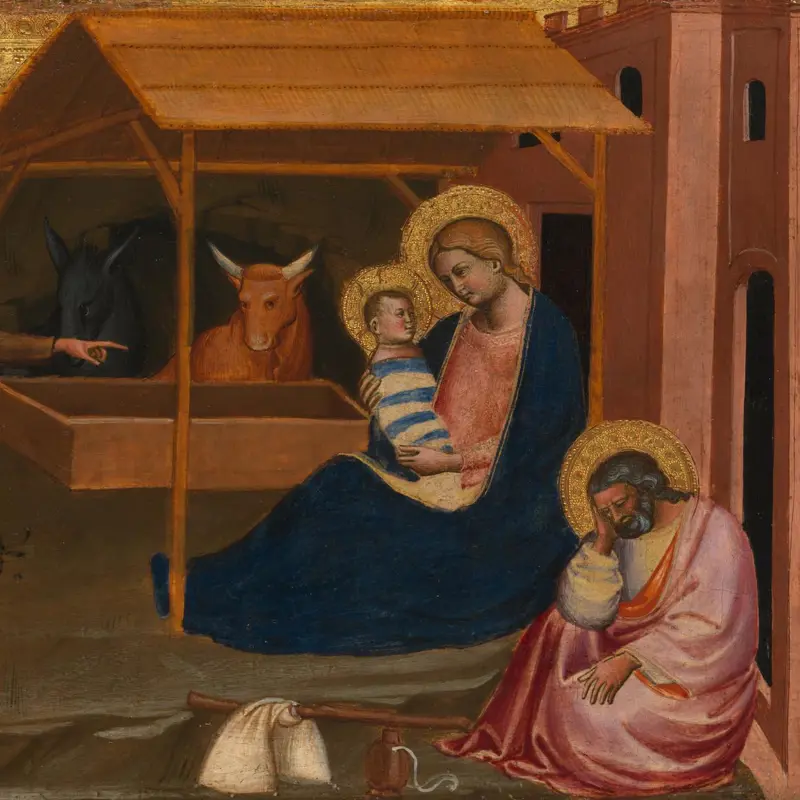Niccolò di Pietro Gerini, 'Frame Roundel', 1387
About the work
Overview
This roundel (round panel) comes from the frame of the central panel of a multi-panelled altarpiece with an image of the baptism of Christ at the centre. It shows an angel, fingertips touched together gently in prayer.
This is the only surviving frame decoration from the altarpiece but there may have been other roundels showing angels dotted across the frame – perhaps in homage to the name of the monastery, Santa Maria degli Angeli.
Key facts
Details
- Full title
- Frame Roundel
- Artist
- Niccolò di Pietro Gerini
- Artist dates
- Documented 1368, died probably 1415, certainly by 1427
- Part of the group
- Baptism Altarpiece
- Date made
- 1387
- Medium and support
- Egg tempera on wood (probably poplar)
- Dimensions
- 12.5 × 12.5 cm
- Acquisition credit
- Bought, 1857
- Inventory number
- NG579.4
- Location
- Not on display
- Collection
- Main Collection
Provenance
Additional information
Text extracted from the ‘Provenance’ section of the catalogue entry in Dillian Gordon, ‘National Gallery Catalogues: The Italian Paintings before 1400’, London 2011; for further information, see the full catalogue entry.
Exhibition history
-
2011Devotion by Design: Italian Altarpieces before 1500The National Gallery (London)6 July 2011 - 2 October 2011
Bibliography
-
1951Davies, Martin, National Gallery Catalogues: The Earlier Italian Schools, London 1951
-
1986Davies, Martin, National Gallery Catalogues: The Earlier Italian Schools, revised edn, London 1986
-
1988Gordon, Dillian, National Gallery Catalogues: The Early Italian Schools before 1400, revised edn, London 1988
-
2001
C. Baker and T. Henry, The National Gallery: Complete Illustrated Catalogue, London 2001
-
2011Gordon, Dillian, National Gallery Catalogues: The Italian Paintings before 1400, London 2011
About this record
If you know more about this work or have spotted an error, please contact us. Please note that exhibition histories are listed from 2009 onwards. Bibliographies may not be complete; more comprehensive information is available in the National Gallery Library.
Images
About the group: Baptism Altarpiece
Overview
This altarpiece is the earliest known example that shows the baptism of Christ as the central image – in large multi-panelled altarpieces it was usually the Virgin and Child.
It was made for a chapel in Santa Maria degli Angeli, the Camaldolese monastery in Florence. The chapel was dedicated to the feast commemorating Saint John the Baptist’s death, but the central panel depicts the key moment in his life: when he baptised Christ in the river Jordan.
The inscription tells us that it was commissioned by one of the monastery’s monks, Don Filippo Nerone Stoldi, in memory of his mother. The monastery contained many altarpieces commissioned by Florentine families, which served as memorials. One of the monks’ duties was to say prayers for the souls of the dead on days specified by the families.

